What is Dry Aging?
Dry Aging – What is it and how is it done?
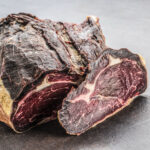 Dry aging is a process of storing meat in a controlled environment for a period of time to enhance its flavor and tenderness. It is a traditional technique that has been practiced for centuries, but has become less common in modern times due to the higher cost and risk of spoilage. However, many chefs and meat enthusiasts still prefer dry aged meat for its unique taste and texture.
Dry aging is a process of storing meat in a controlled environment for a period of time to enhance its flavor and tenderness. It is a traditional technique that has been practiced for centuries, but has become less common in modern times due to the higher cost and risk of spoilage. However, many chefs and meat enthusiasts still prefer dry aged meat for its unique taste and texture.
The main benefits of dry aging are:
– Flavor development: As the meat loses moisture, the natural enzymes in the muscle break down the proteins and fats, creating complex and aromatic compounds that give dry aged meat its distinctive flavor. Some of these compounds are similar to those found in cheese, nuts, and mushrooms.
– Tenderness improvement: The enzymatic activity also softens the connective tissue and muscle fibers, making the meat more tender and easier to chew.
– Shrinkage reduction: By removing excess water from the meat, dry aging reduces the amount of shrinkage that occurs during cooking, resulting in a juicier and more satisfying product.
The main challenges of dry aging are:
– Cost increase: Dry aging requires a lot of time, space, and equipment to maintain the optimal conditions for the meat. It also results in a significant loss of weight (up to 30%) due to evaporation and trimming of the outer layer of mold and bacteria. These factors increase the cost per pound of dry aged meat compared to fresh or wet aged meat.
– Spoilage risk: Dry aging exposes the meat to air, which can introduce harmful microorganisms that can cause spoilage or food poisoning. To prevent this, the meat must be stored in a clean and sanitary environment with proper temperature, humidity, airflow, and lighting. The meat must also be inspected regularly and trimmed of any moldy or discolored parts before consumption.
The main steps of dry aging are:
– Selecting the meat: The best candidates for dry aging are large cuts of beef with a high fat content and a thick layer of fat on the outside. This helps protect the meat from drying out too much and adds flavor. Some popular cuts for dry aging are ribeye, striploin, sirloin, and brisket. Other types of meat, such as lamb, pork, and poultry, can also be dry aged, but they have a shorter shelf life and a less pronounced flavor change than beef.
– Preparing the meat: The meat should be cleaned of any dirt or blood and patted dry with paper towels. It should also be wrapped in cheesecloth or butcher paper to prevent direct contact with the air and to absorb any excess moisture.
– Storing the meat: The meat should be placed on a rack or a tray in a refrigerator or a dedicated dry aging cabinet. The ideal temperature range is between 34°F and 38°F (1°C and 3°C), which is low enough to inhibit bacterial growth but high enough to allow enzymatic activity. The ideal humidity level is between 75% and 85%, which is high enough to prevent case hardening (the formation of a tough outer crust) but low enough to allow moisture loss. The ideal airflow is gentle but constant, which helps evaporate the moisture and circulate the air around the meat. The ideal lighting is dim or dark, which prevents oxidation and discoloration of the meat.
– Aging the meat: The duration of dry aging depends on personal preference and availability. Generally, the longer the meat is aged, the more intense the flavor and tenderness become. However, there is also a point of diminishing returns, where the meat starts to lose too much weight and quality. Most experts recommend a minimum of 14 days for noticeable results, and a maximum of 60 days for optimal results. Some extreme enthusiasts may go up to 120 days or more, but this is rare and risky.
– Trimming and cooking the meat: Before cooking or serving, the dry aged meat must be trimmed of any moldy, discolored, or dried out parts. This can be done by a butcher or at home with a sharp knife. The trimmed parts can be discarded or used for making stock or sauce. The remaining meat can be cooked as usual, but it may require less time and heat than fresh or wet aged meat due to its lower moisture content and higher tenderness.
Dry aging bags
Dry aging bags are special bags that allow you to dry age meat at home. Dry aging is a process that enhances the flavor and tenderness of meat by letting it lose moisture and develop a crust over time. Dry aging bags have a breathable membrane that protects the meat from bacteria and mold, while allowing water vapor to escape. Dry aging bags are easy to use and do not require a vacuum sealer. You can dry age different cuts of meat, such as ribeye, striploin, brisket, or sirloin, for 28 to 45 days in your refrigerator. Dry aging bags can help you create restaurant quality meat at home with superb flavor and texture. Here at Thai Artisan Foods, you can order your dry aging bags to make even Thai beef tender and delicious.
Dry aging is an art and a science that requires patience and skill. It is not for everyone, but for those who appreciate its benefits, it can be a rewarding and delicious experience.

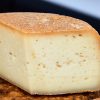

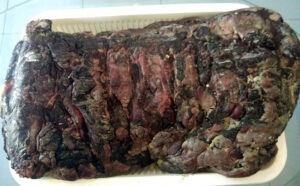
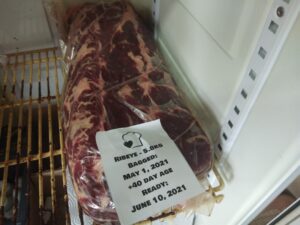
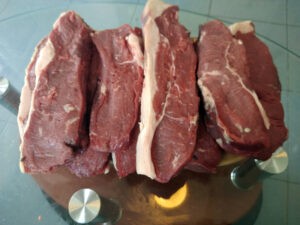
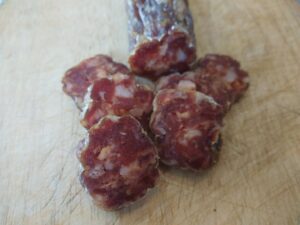
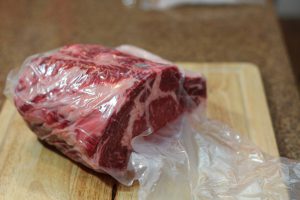
Add comment
You must be logged in to post a comment.